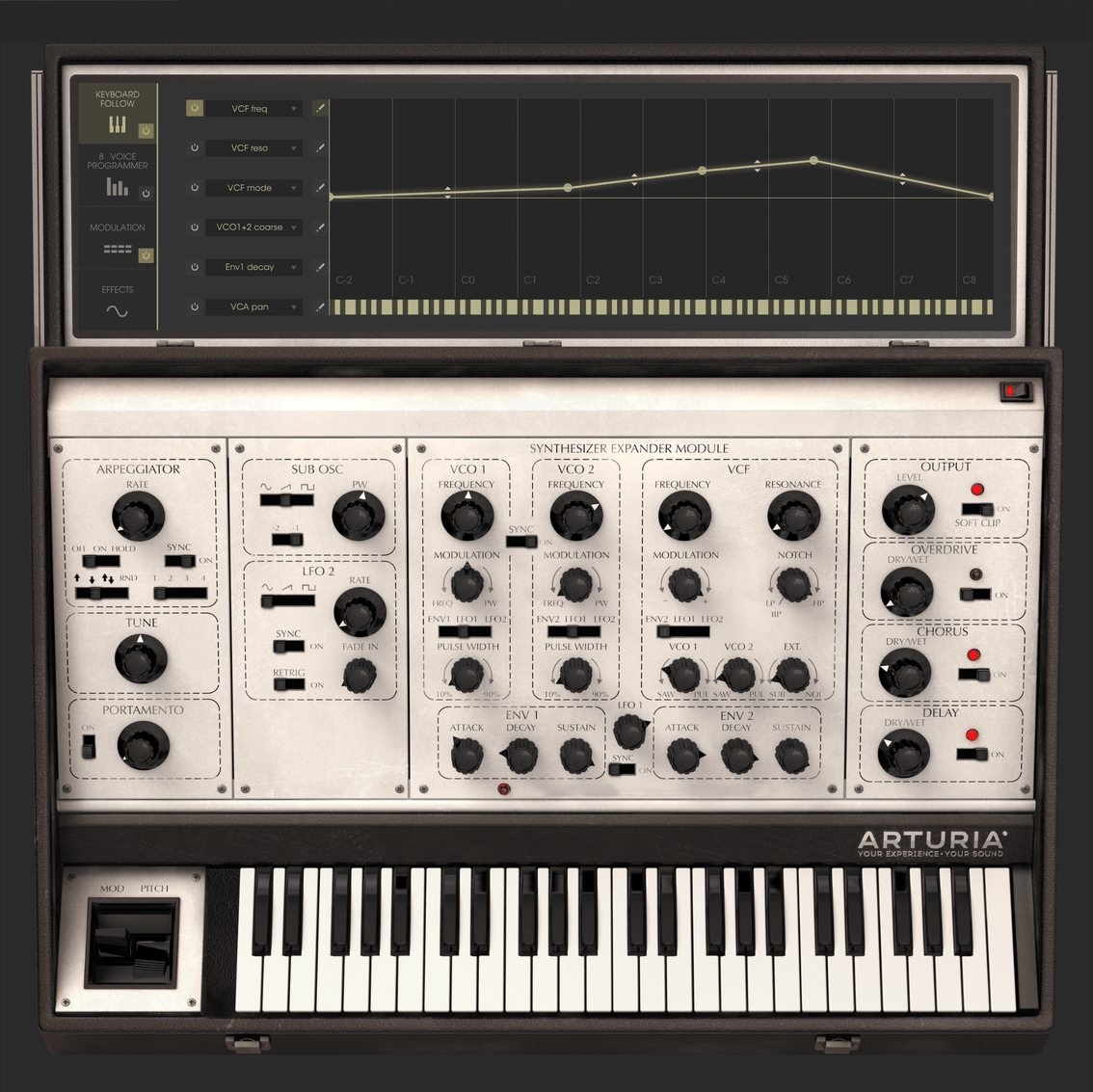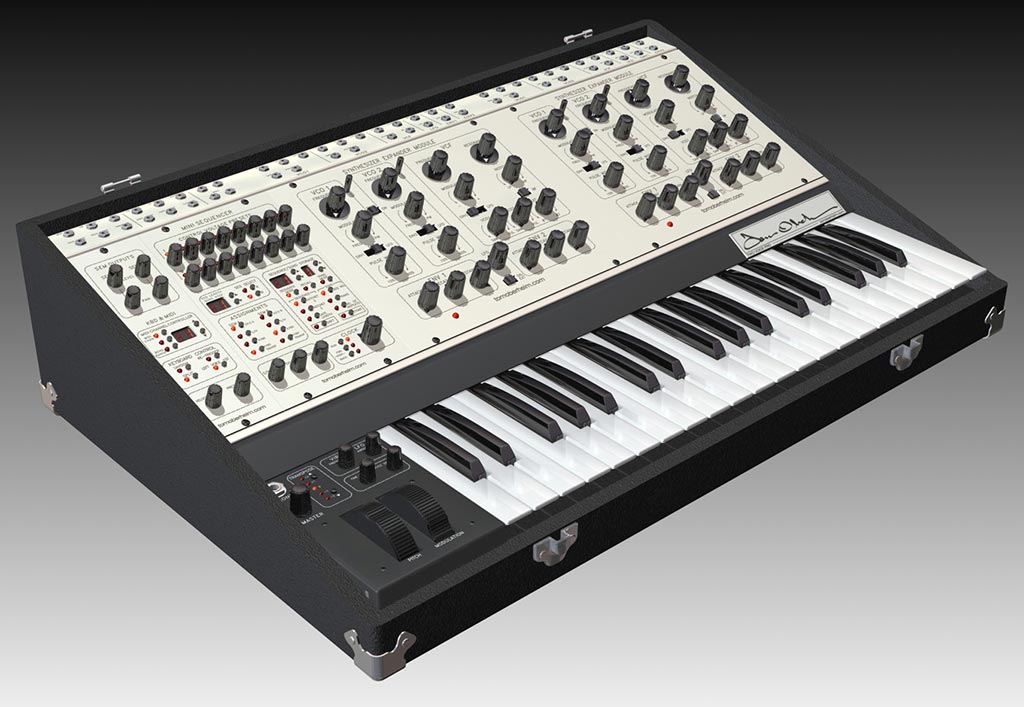
Arturia Oberheim Sem V Mac Osx Download Youtube
The Oberheim SEM V has a simplicity and elegance that was a feature of many 70’s synths. Arturia have managed to replicate these qualities as well as adding some very cool innovations to the original design. Arturia Oberheim SEM V download crack (1).Arturia Oberheim Sem V Mac Osx Download Torrent. Download Arturia - Oberheim SEM V 1.3.1.9 R2 AU.AAX.VST.VST3.ST OS X. Arturia Oberheim SEM V Download.
One of Arturia’s latest synth recreations is the Oberhiem SEM V, which was produced in the late 70s. Intel motherboard manual chipset. Our reviewer thinks that Arturia has a clear-cut winner on their hands. By Rob Mitchell, Mar.
2014 Arturia is a music software company based in France, and they’re the makers of many different softsynth plugins. They have also produced some hardware MIDI controllers and synthesizers as well. Most of their plugins are modelled after famous hardware synthesizers from the past, and even some drum machines are covered by this multifaceted company. A few of their classic synthesizer emulations include the Minimoog, Jupiter-8, and Prophet 5.
One of their latest synth recreations is the Arturia Oberheim SEM V. The Oberheim SEM was originally produced from about 1974 to 1979. The “SEM” part of its name stands for Synthesizer Expander Module. When it was released, the idea was that it could back up the sound of another synth, giving it an extra boost by fattening the sound.
It could also be played on its own, as long as you had a keyboard of your own to connect to it. The filter that Oberheim included in the hardware was 12dB/octave, so its slope wasn’t as steep as some other synths at that time. It did include different filter types however, and I’ll get to those later. With this software version of the SEM, Arturia has added new features. Some of these include a sub-oscillator, an additional LFO, an arpeggiator, polyphony, and effects.

It is compatible with Windows 7 and 8, Intel-based Macs with OS X 10.6 or higher, and there are both 32-bit and 64-bit formats. It can be loaded into many different hosts. Some of the supported DAWs include Sonar X2, FLStudio 10, and Live 9. You check the Arturia website for the list of supported hosts. There is also a standalone version you can use. Installation was easy, and only took a few minutes. The E-licenser copy protection works pretty well and you will need an internet connection for it to work.
The whole process went smoothly, and I was soon able to load both the regular and standalone versions. For most of my review purposes, I loaded it in Sonar X3 Producer. Oscillators The Oberheim SEM V has two VCOs (voltage-controlled oscillators) and each of those has a choice of either a sawtooth or a pulse waveform. You can tune each VCO by rotating the Frequency knob, and if you use the right mouse button and turn the knob, it will fine-tune the frequency amount. You can also accomplish the same thing by holding the Control key while using the left mouse button. There is also Sub-oscillator and a Noise generator. The Sub-oscillator doesn’t have its own pitch control; its pitch is tied to the pitch of the first VCO.
However, it does have a switch to choose between one or two octaves below the first VCO’s tuning. You can select a sine, saw, or pulse waveform, and it has its own pulse width control as well. To select either of the two available waveforms for VCO1 or VCO2, you have to go to the VCF (voltage-controlled filter) section. Having never used an actual hardware Oberheim SEM, I thought placing it there was a little confusing.
I don’t think I’ve ever run into a synth where you choose the waveform for an oscillator in a separate area of the GUI screen. I am guessing that since it’s that way on the original SEM, they just wanted to keep that same design. Rotating the waveform selection knob to the left gives you the sawtooth, and all the way to right switches it to the pulse. It acts as a volume control as well, so when you get closer to the center position, the volume will be reduced.
If it is straight up at the center position, there will be no output from the VCO. The control for the Sub-Oscillator and Noise works the exact same way. Turning it to the left and you get the Sub-Oscillator, and all the way to the right is the Noise. If the knob is straight up, there is no signal from either of those two.
The Noise it uses is actually white noise, which is an equal amount of all frequencies. You can also sync VCO 1 and VCO2 together, and the on/off switch for it is in between the Frequency knobs. When it is switched on, the VCO1 controls the pitch. When you change the Frequency knob for VCO2, it changes the resulting waveform. It will modify the sound in a unique way that isn’t possible with normal layering of the oscillators, or by using the filter controls. Filter section Arturia has included four filter types: Low pass, Notch, High pass, and Band pass. You can select between them with the knob that’s right below the Resonance control. The filter type control lets you vary the amount between the Low pass, Notch filter, and the High pass.